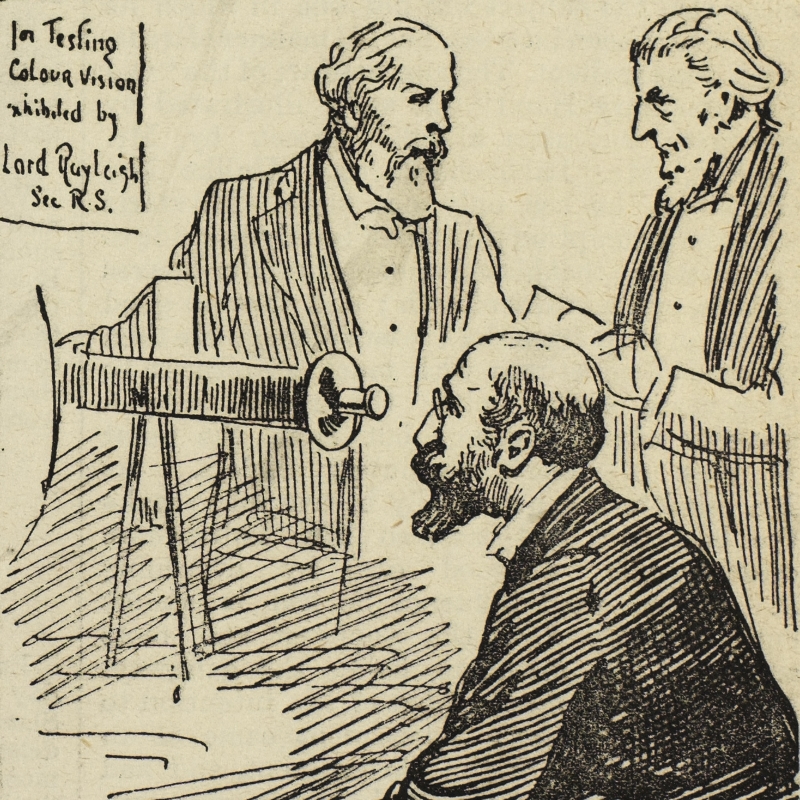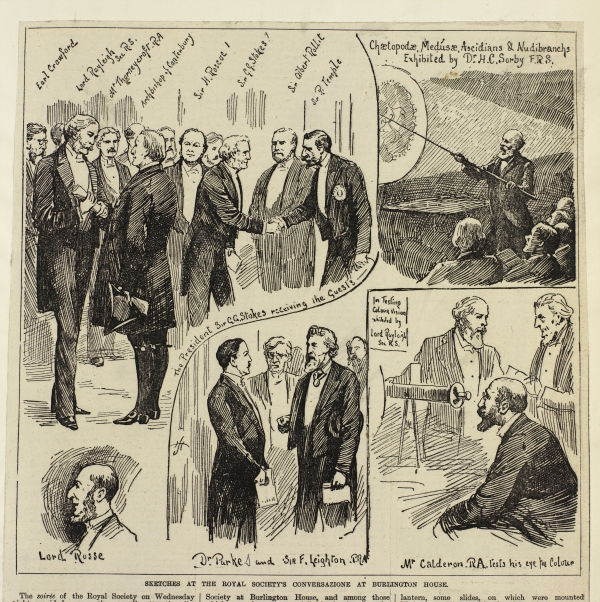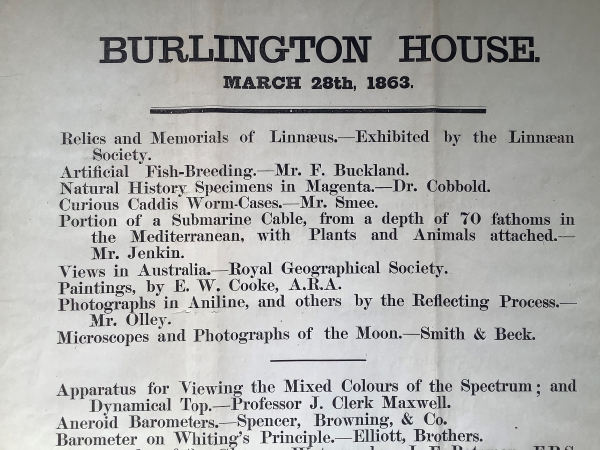Discover how models, from warships and Saturn's rings to wax orchids and a baby hippopotamus, were displayed at the Royal Society's 19th-century exhibitions at Burlington House.

As someone who spent his childhood trying to stick together bits of plastic Airfix kits, I should know a little about the joys of a well-finished model, but I have to be honest – I was never that good at it. Scientists and engineers, however, are modellers of a different class, and superior three-dimensional aids were a small but important element within the Royal Society’s early Summer Science Exhibitions.

Press cutting: 'Sketches at the Royal Society's conversazione at Burlington House', 19th century
It’s immediately obvious why, of course – Burlington House, the Society’s former headquarters, was roomy, but not for the very largest of items. While photographs and drawings were important visual aids, neither could demonstrate how something really worked – they could only give an impression of what it looked like. The Society did manage to get the British Army’s latest Comet tank into its Piccadilly courtyard in the immediate aftermath of the Second World War, but that was an exceptional effort. To show the very large, exhibitors sometimes had to go small.
Apart from Victorian press cuttings, the most detailed early archive of exhibitions is a small series of Burlington House posters, listing the Royal Society’s display items for almost a decade from 1863. These show that participants included some very big names in science. James Clerk Maxwell (1831-1879), for example, was a regular attendee. His demonstration piece of 1863 attempted to explain the kinetics of Saturn’s rings; this was presumably the model he had constructed by Smith and Ramage of Aberdeen and which still survives in the Cavendish Laboratory’s collections. Maxwell returned in subsequent years, with his electrical bobbin (1864) and, my favourite item of his, a ‘real image stereoscope’ for showing three-dimensional geometry (1867).

Poster for a Royal Society soirée at Burlington House on 28 March 1863 (detail)
Not to be outdone on small-scale world-building, John Evans (1823-1908) contributed a model described in his 1867 paper on geological causes to variations in Earth’s axis. This was a wheel with adjustable screws on its rim; adjustments (mimicking shifts in the Earth’s crust) might be seen to disturb the equilibrium of the wheel.
One of the regular subjects for exhibited models at this period was innovation in ship design, and particularly in warships. This was the rapidly-evolving age of the ironclad vessel, and alongside Maxwell’s Saturn rings were the latest miniatures from the Woolwich dockyards. These included a model for an unnamed 50-gun armoured plated frigate – possibly HMS Achilles, constructed in 1863 – and designs by Captain Cowper Phipps Coles which featured the novelty of a ‘ship-shield’ gun-turret.
One striking maritime inclusion was a model of a vessel of the Alabama class. If you think that’s a curious name for a Royal Navy ship, you’d be right. The year 1863 was midway through the terrible bloodshed of the American Civil War and the Alabama was a Confederate States Navy raider. Its sinking off the French coast in 1864 would be recorded by the painter Édouard Manet. The presence of the model is a sobering reminder that although Britain was officially neutral in the war, British shipbuilders and armaments-makers were perfectly willing to profit from slave-owning Southern states: the Alabama was built in secret by Lairds of Liverpool.

'The Battle of the Kearsarge and the Alabama' by Édouard Manet, 1864 (public domain via Wikimedia Commons)
Probably the most poignant model mentioned in the poster series is from the final year of the set, in 1871. The exhibit was a plaster rendering (probably a cast) of the body of a baby hippopotamus, born to the pair Obaysch and Adhela in London’s Zoological Gardens. The male, Obaysch, arrived at the Zoo in 1850 and was the first such animal to have been seen in London in modern times. With little understanding of the life-cycle and needs of such creatures and with miserable temperatures in London, it is little wonder that the calf didn’t survive. Frank Buckland made two casts and one was seen in the following year by zoo visitor Mark Twain. It’s one of the few exhibits I’m quite pleased that I wasn’t around to experience.

Photograph of Francis Trevelyan Buckland by Samuel Alexander Walker, 1879
If I had to choose one set of models to see, it would be from the botanical sections of later Royal Society conversazioni. Kew Gardens’ Director, William Thiselton-Dyer (1843-1928) was a regular contributor to the Summer Science Exhibitions, commissioning work by Edith Delta Blackman, née Emmett, who modelled orchids in wax. These fabulously skilled pieces were showcased at the Royal Society in 1897 and, like Maxwell’s models, still survive – so I can have my wish and view them at their Kew home. One day, the Society will have to recreate a nineteenth century Summer Science Exhibition – the models, at least, are still out there.







